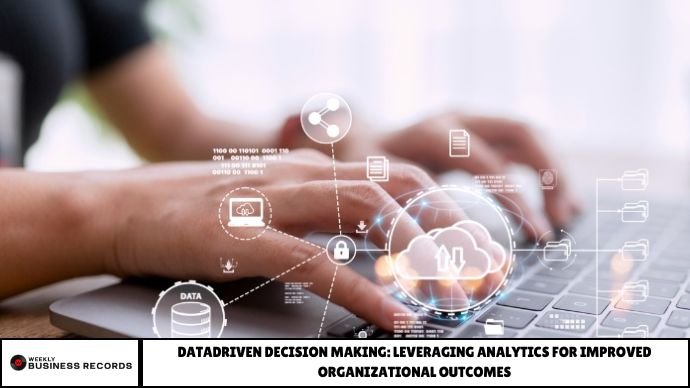Data-driven decision making (DDDM) empowers organizations to make smarter, faster, and more strategic choices using real-time analytics. By leveraging data insights, businesses can improve performance, reduce risk, and gain a competitive edge. This article explores the benefits of data-driven strategies, challenges to implementation, and how to create a culture that supports data literacy and innovation.
In the heart of Silicon Valley, a small startup called XeroTech set out to transform how decisions are made and succeeded. Within just two years, the company leveraged data-driven decision making (DDDM) to achieve a 30% boost in operational efficiency. Their success isn’t isolated. A pivotal McKinsey Global Institute study found that companies using data analytics strategically saw up to a 20% increase in profit margins, proving that data is no longer just a byproduct; it’s a vital business asset.
XeroTech’s journey reflects a larger movement across industries. Businesses that harness the power of analytics gain a competitive edge, while those that don’t risk falling behind. But the impact of DDDM goes far beyond efficiency or profit. It is a driver of innovation, agility, and customer satisfaction.
A Deloitte survey found that organizations integrating data analytics into daily operations are five times more likely to make faster, more confident decisions. Meanwhile, IBM reports that 62% of data-centric companies improve customer engagement, using insights to refine marketing, product development, and service delivery. XeroTech exemplifies this trend by using real-time user data to pivot product offerings and enhance customer loyalty, resulting in sustained revenue growth.
In today’s information-rich economy, success belongs to the organizations that treat data as a strategic resource, not an afterthought. Those who invest in analytics will lead the future. Those who ignore it risk being left behind.
Introduction: Are You Making Decisions Based on Gut or Data?
Imagine launching a new product based on instinct, only to see it flop in the market. Now imagine the same product backed by customer insights, historical trends, and predictive modeling—it’s a completely different story.
In today’s digital-first world, data is the new competitive currency. Yet, many organizations still struggle to fully harness it. A 2023 survey by NewVantage Partners found that while 91.9% of companies are investing in data initiatives, only 40.8% have created a data-driven culture.
This article will guide you through the essentials of data-driven decision making, the benefits it delivers, key implementation steps, and how to overcome the challenges along the way.
What Is Data-Driven Decision Making (DDDM)?
Data-driven decision making is the strategic use of data analysis and interpretation to guide business decisions. Rather than relying solely on intuition or past experience, leaders use relevant data to make choices that align with objectives and measurable outcomes.
Why It Matters:
- Enhances accuracy in planning and forecasting
- Encourages objectivity and removes personal bias
- Accelerates problem-solving through evidence-based insights
Key Benefits of Data-Driven Decision Making
1. Improved Operational Efficiency
Analytics identify bottlenecks, track KPIs, and optimize workflows.
- Example: Predictive maintenance can reduce equipment downtime by up to 50% (McKinsey).
2. Stronger Strategic Planning
Data uncovers trends, market shifts, and customer behavior.
- Companies using analytics are 5x more likely to make faster decisions (Bain & Company).
3. Enhanced Customer Experience
By analyzing feedback and behavior, businesses personalize offerings.
- 80% of customers are more likely to buy from companies that offer personalized experiences (Epsilon).
4. Risk Reduction and Compliance
Data monitoring detects anomalies and ensures regulatory compliance.
- Real-time alerts can catch fraud or security threats early.
5. Better ROI and Performance
Organizations using data effectively see up to a 6% increase in profit margins, according to PwC.
Challenges of Implementing Data-Driven Strategies
1. Data Silos and Inaccessibility
Departments often hoard data, making it hard to access or integrate.
Solution: Adopt centralized data platforms and cross-functional collaboration.
2. Low Data Literacy
Not all employees know how to interpret or apply data insights.
Solution: Offer training programs and promote data-driven thinking across teams.
3. Poor Data Quality
Inaccurate or outdated data leads to flawed decisions.
Solution: Regularly audit and clean data; establish governance policies.
4. Overreliance on Tools Over Strategy
Tech is powerful, but without a strategy, it’s ineffective.
Solution: Align analytics tools with specific business goals.
How to Build a Data-Driven Culture
1. Start with Leadership Commitment
Leaders must model data-driven behaviors and prioritize decisions backed by evidence.
2. Set Clear Metrics and KPIs
Define success through measurable indicators tied to goals.
3. Democratize Data Access
Use dashboards and platforms that make data available across departments.
4. Invest in Analytics Talent
Hire data scientists and analysts or upskill existing staff.
5. Celebrate Data Wins
Showcase success stories where data-led decisions led to positive outcomes.
FAQ
1. What is data-driven decision making?
It’s the process of using data insights to guide business strategies and actions.
2. Why is data-driven decision making important?
It improves accuracy, efficiency, and overall performance in organizations.
3. What tools are used for data-driven decisions?
Tools include BI software (e.g., Tableau, Power BI), data warehouses, and AI analytics.
4. Can small businesses use data-driven strategies?
Yes, even small businesses can use tools like Google Analytics and Excel to make smart decisions.
5. What skills are needed for DDDM?
Key skills include data analysis, critical thinking, and familiarity with analytics tools.
6. How do you encourage a data-driven culture?
Train employees, improve data access, and promote leadership support for data use.
Conclusion
Data-driven decision making is no longer reserved for large tech firms — it’s a vital strategy for any organization that wants to grow, innovate, and outperform the competition. By embracing analytics, investing in data literacy, and building a culture that values evidence over instinct, companies can unlock smarter, faster, and more impactful decisions.


